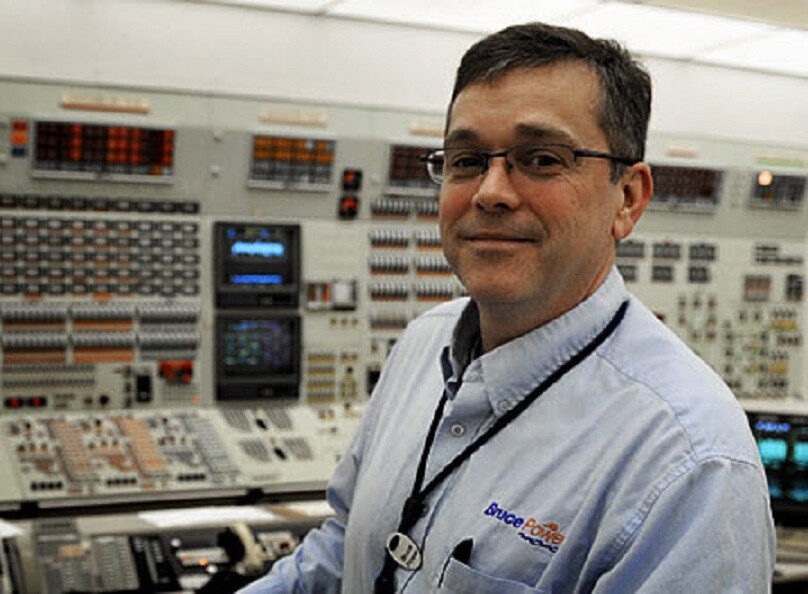
What’s it Like to Work Inside a Nuclear Power Plant?
May 2015
 The planned refurbishment of 10 of Ontario’s nuclear reactors is going to help keep electricity prices low in Ontario. It’s a big project that will take 15 years to roll out – and it’s expected to create more than 10,000 jobs, about 90% of them inside the province. But what kind of jobs are they?
The planned refurbishment of 10 of Ontario’s nuclear reactors is going to help keep electricity prices low in Ontario. It’s a big project that will take 15 years to roll out – and it’s expected to create more than 10,000 jobs, about 90% of them inside the province. But what kind of jobs are they?
Peter Weekes should know: he’s been at Bruce Power since 1977, and has worked on many of the key projects in running the plant. And the variety is something he likes. “Within the company, there’s a breadth of experience to be gained,” he says. “I’ve alternated my time between engineering, operations, and large projects.”
Some of those projects are the restarting of the Unit 1 and 2 reactors in 2012, and managing the replacement of steam generators for the upcoming refurbishment. He retired during the restart of Units 1 and 2, but loved the work so much that he came back the next day as a contractor. “I like working with the people, particularly in planning for the major component replacement for the refurbishment,” he says. “The people here want the refurbishment to go forward – we feel we’re contributing to the future, and we are. We’re extending the reactor’s life and making it better.”
One of the people he worked with throughout his career is his wife, Linda, who was involved in the restarting of Units 1 and 2, and in changing the reactors’ fuel channels. Peter says that she was the only woman in the engineering program at Queen’s in the late ’60s and early ’70s. “It’s come a long way since then,” he says. “It’s a very diverse workforce – gender-wise, ethnically, religion, sexual orientation, and so on.”
But that workforce still needs new talent, he says. “We need to get people into the front end of the chain, so that they’ll be experienced by the time they can lead the projects later on. I see a lot of people from the next generation working here, and it’s rewarding.”
One of that next generation is Matthew Saldanha, who joined Bruce Power in 2013. As a senior technical engineer officer, Matthew is part of a team that manages any design changes to the plant. He works with his mentors to ensure that the plants’ design integrity is kept intact. By doing this, the team is able to protect the stations’ assets and the public.
As a new recruit in the nuclear industry, Matthew says, “It was a little overwhelming, but I had my mentors, and worked with a good group around me. The learning curve was steep, but I wasn’t doing anything by myself.”
Matthew describes relations between the plant and nearby communities as very good. “Most people living in the town work at the plant, and in some way or another the plant touches everyone’s lives. It only brings positive things to this area,” he says. Peter agrees, noting that Bruce Power contributes to the community through social events such as beach parties and golf tournaments, and by supporting charities. And both are very comfortable living so close to the plant. “I would live right up against the fence if that’s where I had to be,” says Peter.
Matthew expects his stay near Bruce to be long too. “I see myself staying here, though probably not at the same job: there’s lots of room to move up, and the company is very receptive to that. I’d recommend it to anybody.” Peter says that the refurbishment has opened up new career opportunities. “I might not have recommended it ten years ago, because the industry had levelled off: plans for the next station after Darlington had been shelved. Now that we’re on the cusp of the refurbishments, I would certainly encourage people to get into the industry. This work will last another generation.”
And even after the refurbishments are done, the plants will keep running for decades, needing skilled people. According to Canadian Manufacturers and Exporters, a single nuclear reactor employs about 640 people full-time, with great pay – and Ontario has 18 of these reactors.



